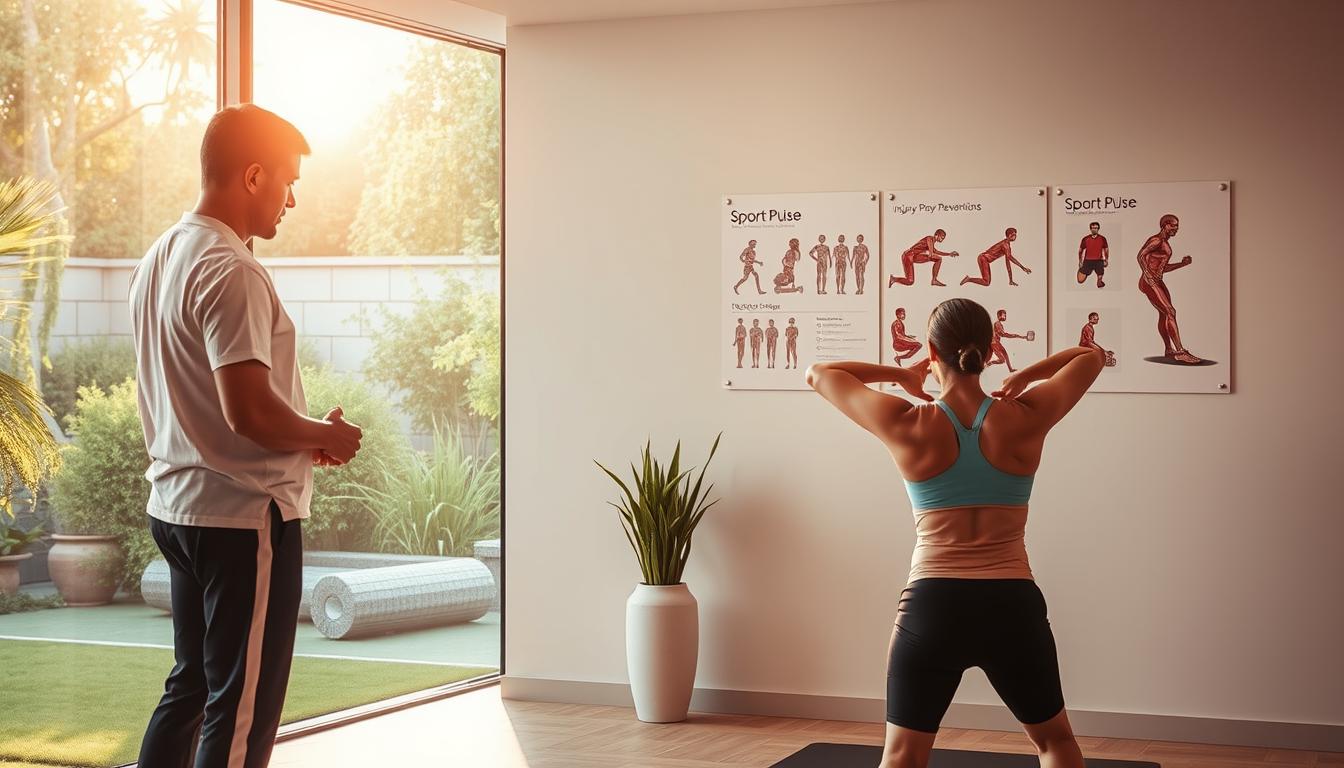A startling fact: Sports injuries affect millions of athletes worldwide each year, significantly impacting their performance and career longevity.
This comprehensive guide provides insights on how to effectively prevent sports injuries and optimize recovery processes based on professional sports medicine recommendations. Understanding the different types of injuries athletes face, from acute traumatic injuries to chronic overuse conditions, is crucial.
By implementing proper training techniques and understanding the body’s warning signs, athletes can dramatically reduce their risk of experiencing sports-related injuries. Whether you’re a professional athlete or a weekend warrior, these evidence-based strategies will help you stay active and injury-free.
Key Takeaways
- Understanding the types of injuries athletes commonly face.
- Implementing proper training techniques to prevent injuries.
- Recognizing the body’s warning signs to reduce injury risk.
- Optimizing recovery processes based on sports medicine recommendations.
- Staying active and injury-free with evidence-based strategies.
Understanding Sports Injuries: Acute vs. Chronic
Injuries in sports can be sudden or develop over time, and distinguishing between these two types is essential for effective management. Sports injuries can significantly impact an athlete’s performance and overall health.
Acute Injuries: Causes and Common Types
Acute injuries are sudden, traumatic injuries that occur due to a specific incident. Examples include sprains, strains, fractures, dislocations, and concussions. These injuries can result from falls, collisions, twists, or direct blows to the body. They usually cause immediate pain, swelling, and limited range of motion.
Chronic Injuries: Overuse and Repetitive Stress
Chronic injuries develop gradually over time due to repetitive motions or prolonged stress on muscles, tendons, and joints without adequate recovery periods. Unlike acute injury, chronic conditions often begin with mild discomfort that athletes frequently ignore, allowing the condition to worsen before seeking treatment.
| Type of Injury | Causes | Common Examples |
|---|---|---|
| Acute | Falls, collisions, twists, direct blows | Sprains, strains, fractures, concussions |
| Chronic | Repetitive motions, prolonged stress | Tendinitis, stress fractures, IT band syndrome |
Common overuse injuries include tendinitis, stress fractures, IT band syndrome, runner’s knee, and tennis elbow—all resulting from repetitive stress on specific body structures. Risk factors for developing chronic injury include training errors, biomechanical issues, improper technique, inadequate equipment, and anatomical factors unique to each athletes.
Essential Warm-Up Strategies to Prevent Injuries
Incorporating a thorough warm-up into your exercise routine can significantly reduce the likelihood of sports injuries. A proper warm-up prepares your body for physical activity by increasing blood flow to muscles, enhancing flexibility, and reducing the risk of injury. Spend at least 10-15 minutes on dynamic stretches and light aerobic exercises to get your body ready for action.
Dynamic Stretching Techniques
Dynamic stretching is a crucial component of an effective warm-up. It involves moving your joints through a range of motion while keeping your muscles active. Examples include leg swings, arm circles, and hip rotations. These exercises help improve flexibility and reduce muscle stiffness, making them essential for preventing sports injuries. By incorporating dynamic stretches into your warm-up, you can enhance your overall performance and reduce the risk of injury during exercise.
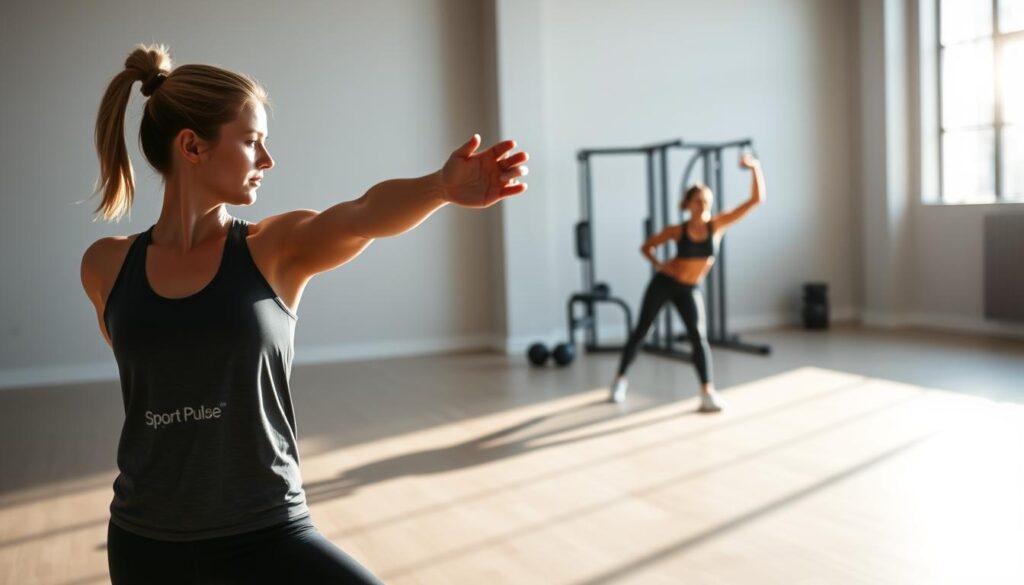
Designing Sport-Specific Warm-Up Routines
Sport-specific warm-up routines should mimic the movements, intensity, and energy systems used in your particular activity. For instance, runners can benefit from a progressive warm-up that includes walking, light jogging, dynamic leg stretches, and running-specific drills. Court sport athletes, such as those playing basketball or tennis, should incorporate lateral movements and quick direction changes into their warm-ups. By tailoring your warm-up to your specific sport or activity, you can better prepare your body for the demands ahead and reduce the risk of injury.
Examples of effective sport-specific warm-ups include the FIFA 11+ program for soccer players, which has been shown to reduce injuries by up to 50%. Strength training warm-ups should include lighter versions of planned exercises, gradually increasing weight while decreasing repetitions. Team sports require comprehensive warm-ups that address cardiovascular fitness, dynamic flexibility, coordination, and sport-specific skills.
Proper Technique and Training Methods
Athletes can significantly reduce their risk of injury by focusing on proper technique and structured training methods. Using proper technique is essential in preventing injuries, whether you’re lifting weights, running, or playing a sport. Ensuring that you are performing movements correctly is vital for both performance enhancement and injury prevention.
Importance of Correct Form
Correct form is the foundation of effective and safe training. Poor technique can lead to unnecessary strain on muscles and joints, increasing the risk of injury. Our therapists can provide technique assessments and corrective exercises to improve your form and reduce the risk of injury. As noted by sports medicine professionals, “Proper technique is not just about avoiding injury; it’s also about optimizing performance.”
“Proper technique is not just about avoiding injury; it’s also about optimizing performance.”
Technique Assessment and Correction
Regular technique assessments are crucial for identifying and correcting poor form. Our therapists can analyze your movements and provide personalized feedback to help you improve your technique. This proactive approach not only prevents injuries but also enhances overall athletic performance.
Gradual Progression in Training Intensity
Gradually increasing training demands is fundamental to both performance improvement and injury prevention. The principle of progressive overload should be applied carefully to avoid the “too much, too soon” error, one of the most common causes of preventable sports injuries.
| Training Variable | Safe Progression Rate | Benefits |
|---|---|---|
| Volume | Increase by no more than 10% per week | Allows for physiological adaptation |
| Intensity | Gradually increase over time | Enhances performance without overstraining |
| Frequency | Adjust based on recovery needs | Balances training and recovery |
By incorporating these strategies into your training regimen, you can significantly reduce your risk of injury and improve your overall athletic performance.
Strength and Conditioning for Injury Prevention
Athletes can substantially reduce their risk of injury by incorporating comprehensive strength and conditioning regimens into their training. Building strength and maintaining good physical condition are key to preventing injuries. Our therapists at Big League can create personalized strength and conditioning programs that address your unique needs and help you stay injury-free.
Core Stability Exercises
Core stability is fundamental to athletic performance and injury prevention. Exercises that strengthen the core muscles, such as planks and Russian twists, improve overall stability and reduce the risk of injury. A strong core enhances the body’s ability to maintain proper form during sports activities.
Sport-Specific Strength Training
Strength training tailored to the specific demands of an athlete’s sport is crucial. For example, a tennis player may focus on exercises that improve shoulder and arm strength, while a soccer player may prioritize leg strength and endurance. Learn more about preventing sports injuries.
Balance and Proprioception Training
Balance and proprioception training are critical components of injury prevention. Proprioception refers to the body’s ability to sense its position in space, which is vital for preventing lower extremity injuries like ankle sprains. Effective balance training progresses from static positions to dynamic movements, enhancing joint stability and reaction time.
| Training Type | Description | Benefits |
|---|---|---|
| Static Balance | Single-leg stance | Improves initial stability |
| Dynamic Balance | Hopping, landing drills | Enhances reaction time and joint stability |
| Sport-Specific Balance | Mimics competitive situations | Prepares athletes for real-game scenarios |

Regular balance training can reduce ankle sprain risk by up to 40% and significantly decrease ACL injury rates. Even minimal balance training (5-10 minutes, 3 times weekly) shows significant protective effects, making it a time-efficient injury prevention strategy.
Expert Advice on Preventing Sports Injuries & Promoting Recovery
A comprehensive approach to injury prevention and recovery is essential for athletes seeking to optimize their performance. This involves a combination of strategies that address different aspects of training and care.
Cross-Training Benefits
Cross-training is a valuable strategy for preventing overuse injuries by giving different muscle groups a chance to rest and recover. As Dr. Escher notes, “Cross-training is a way to let some parts of your body rest while still getting the benefits of exercise.” For example, alternating between swimming, biking, and running can help distribute the workload across different body parts, reducing the risk injury.
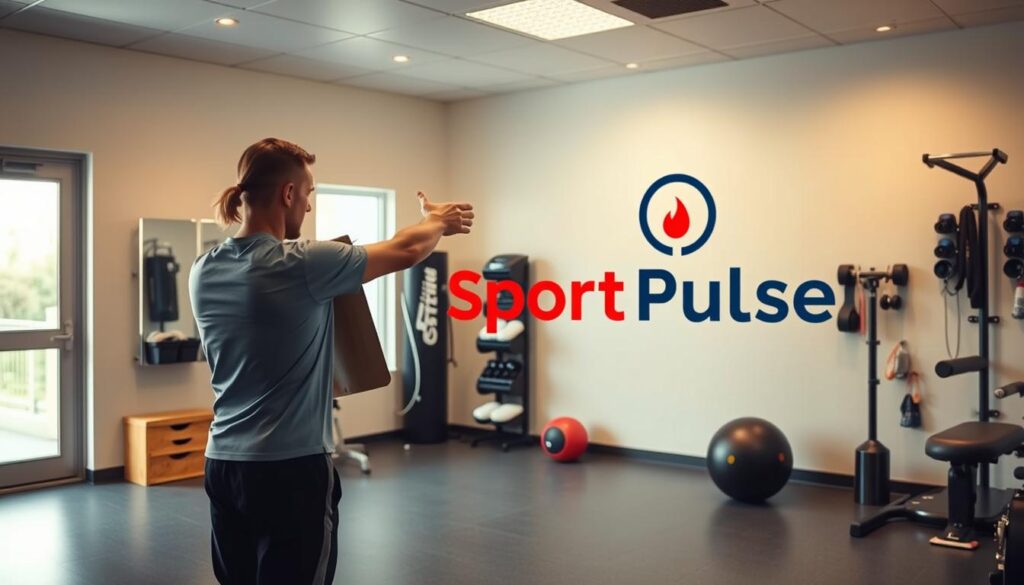
Rest and Recovery Protocols
Adequate rest and recovery protocols are crucial for allowing the body to repair and rebuild tissues. This includes ensuring sufficient sleep, incorporating rest days into training schedules, and using techniques like foam rolling and stretching to aid in muscle recovery.
Nutrition and Hydration Strategies
Proper nutrition and hydration play critical roles in both injury prevention and recovery. Key strategies include consuming adequate protein (1.6-2.2g/kg body weight) to support muscle repair, replenishing glycogen stores with carbohydrates, and maintaining optimal hydration to prevent dehydration-related performance impairments. Additionally, incorporating anti-inflammatory foods rich in omega-3 fatty acids and antioxidants can help manage the inflammatory response to training.
Recognizing Warning Signs: When to Seek Medical Help
Knowing the red flags that necessitate immediate medical attention can be the difference between a quick recovery and a long-term health issue. Athletes should be vigilant about their body’s signals to prevent minor issues from escalating into severe injuries.
Athletes often push their bodies to the limit, but there’s a fine line between rigorous training and causing harm. Understanding when to seek medical care is crucial for maintaining health and preventing further injury.
Red Flags That Require Immediate Attention
Certain symptoms indicate that an athlete should seek immediate medical help. These include:
- Severe pain that doesn’t subside with rest
- Swelling or bruising that is severe or worsening
- Instability or weakness in joints or muscles
- Deformity or misalignment of limbs
- Loss of function or reduced mobility
If you experience any of these symptoms, it’s crucial to seek medical attention promptly to prevent long-term damage.
Finding the Right Sports Medicine Professional
The field of sports medicine encompasses a variety of specialists, including orthopedic surgeons, primary care sports medicine physicians, physical therapists, athletic trainers, and sports-specific rehabilitation specialists. Choosing the right professional depends on the nature of your injury.
For non-surgical conditions, primary care sports medicine physicians are often the best choice. They have specialized training in the unique needs of athletes and can provide comprehensive care. For injuries requiring surgery, orthopedic surgeons are the specialists to consult.
When selecting a sports medicine professional, consider their experience with your specific sport or type of injury. A team approach, involving different specialists working together, often provides the best care for addressing all aspects of injury treatment, rehabilitation, and prevention of future injuries.
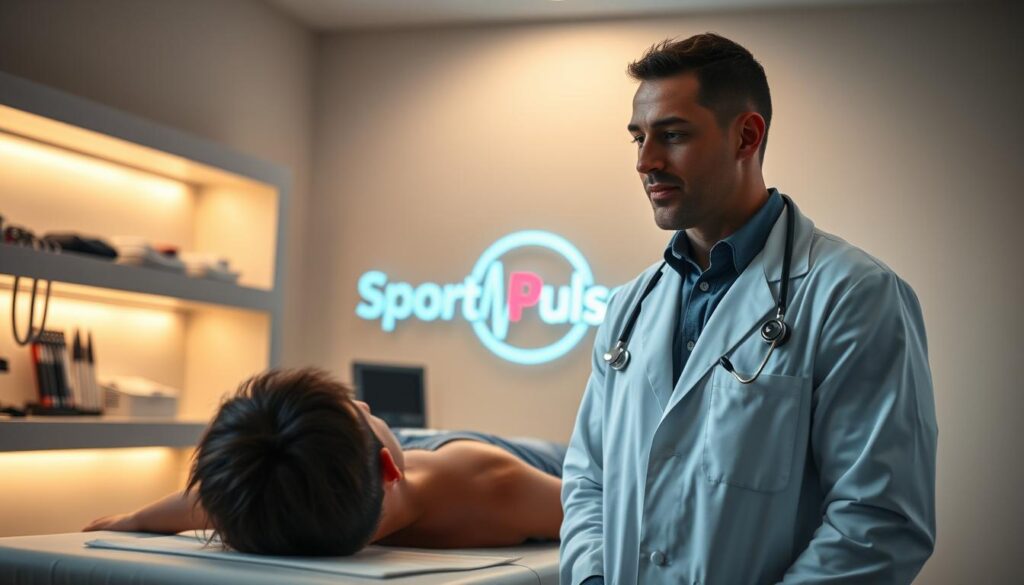
Effective Treatment Approaches for Sports Injuries
Understanding the most effective treatment options for sports injuries can significantly impact an athlete’s recovery process. The right treatment approach can make a substantial difference in the speed and quality of recovery.
The R.I.C.E Method for Minor Injuries
The R.I.C.E method, standing for Rest, Ice, Compression, and Elevation, is a widely recognized first-line treatment for minor sports injuries. Rest the injured area to prevent further injury, apply Ice to reduce pain and inflammation, use Compression to help reduce swelling, and Elevate the injured area above the level of the heart to minimize blood flow and swelling.
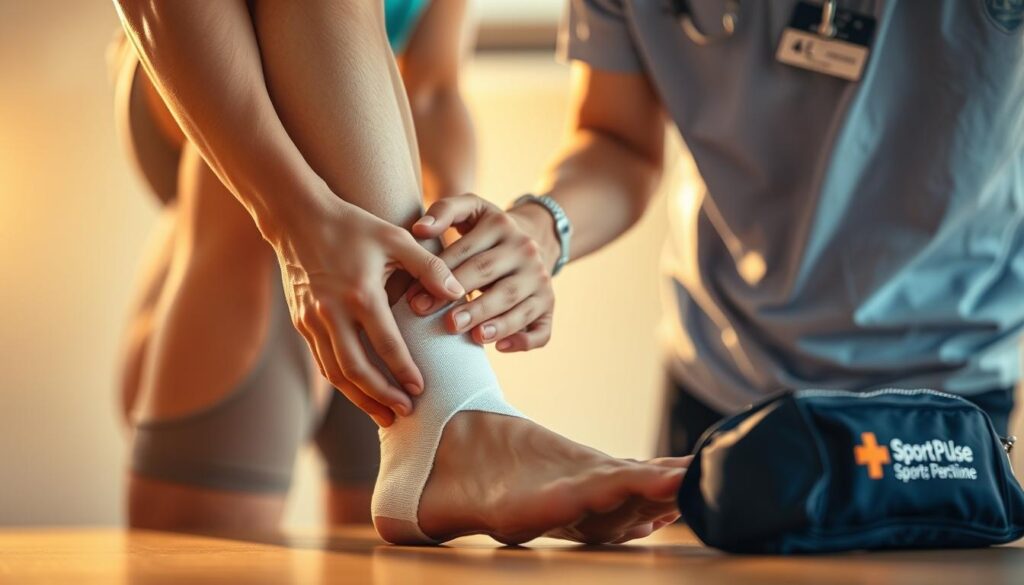
Professional Treatment Options
For more severe injuries, professional treatment is necessary. This may include consulting a sports medicine physician or an orthopedic specialist. They can provide treatments such as medication to manage pain and inflammation, or more advanced interventions like corticosteroid injections.
Rehabilitation and Physical Therapy
After the initial treatment, rehabilitation and physical therapy play a crucial role in the recovery process. A physical therapist will create a personalized plan to restore strength, flexibility, and range of motion. The rehabilitation process typically progresses through phases, focusing on pain management, restoring normal movement, and eventually, sport-specific training.
- A well-structured rehabilitation program is tailored to the individual’s specific needs and progresses through phases, from controlling pain and inflammation to sport-specific training.
- Effective rehabilitation not only addresses the injured tissue but also corrects movement compensations and biomechanical issues.
Conclusion: Building a Sustainable Injury Prevention Routine
Building a sustainable routine to prevent sports injuries is crucial for athletes aiming to maintain peak performance throughout their careers. This involves integrating multiple strategies into their regular training regimen, rather than treating prevention as a separate activity.
A comprehensive injury prevention program that addresses various risk factors such as strength, flexibility, technique, recovery, and nutrition is significantly more effective than focusing on a single element. By making injury prevention a habitual part of their routine, athletes can consistently practice day after day, enhancing their overall performance and longevity in their sport.
Injury prevention should be viewed as a form of performance enhancement, rather than an optional add-on. The healthier an athlete is, the more consistently they can train and perform at their highest level. It’s also essential to adapt prevention routines to different training phases, aging, and changing goals to ensure long-term athletic health and sustainability.
For personalized guidance on building an injury prevention routine specific to your sport and individual needs, you can contact sports medicine experts via WhatsApp at +44-7822010953. Remember, the time invested in prevention is minimal compared to the time lost to injury recovery, making a consistent prevention routine a valuable investment in your athletic future.
The most successful athletes are often those who stay healthy enough to train consistently day after day, year after year. By prioritizing long-term health and enjoyment over short-term performance gains, athletes can enjoy a lifetime of active participation in their sport.
By adopting a mindful approach to training and incorporating comprehensive prevention strategies, athletes can significantly reduce their risk of injury and maintain peak performance. This proactive approach not only enhances athletic longevity but also contributes to overall health and well-being.
